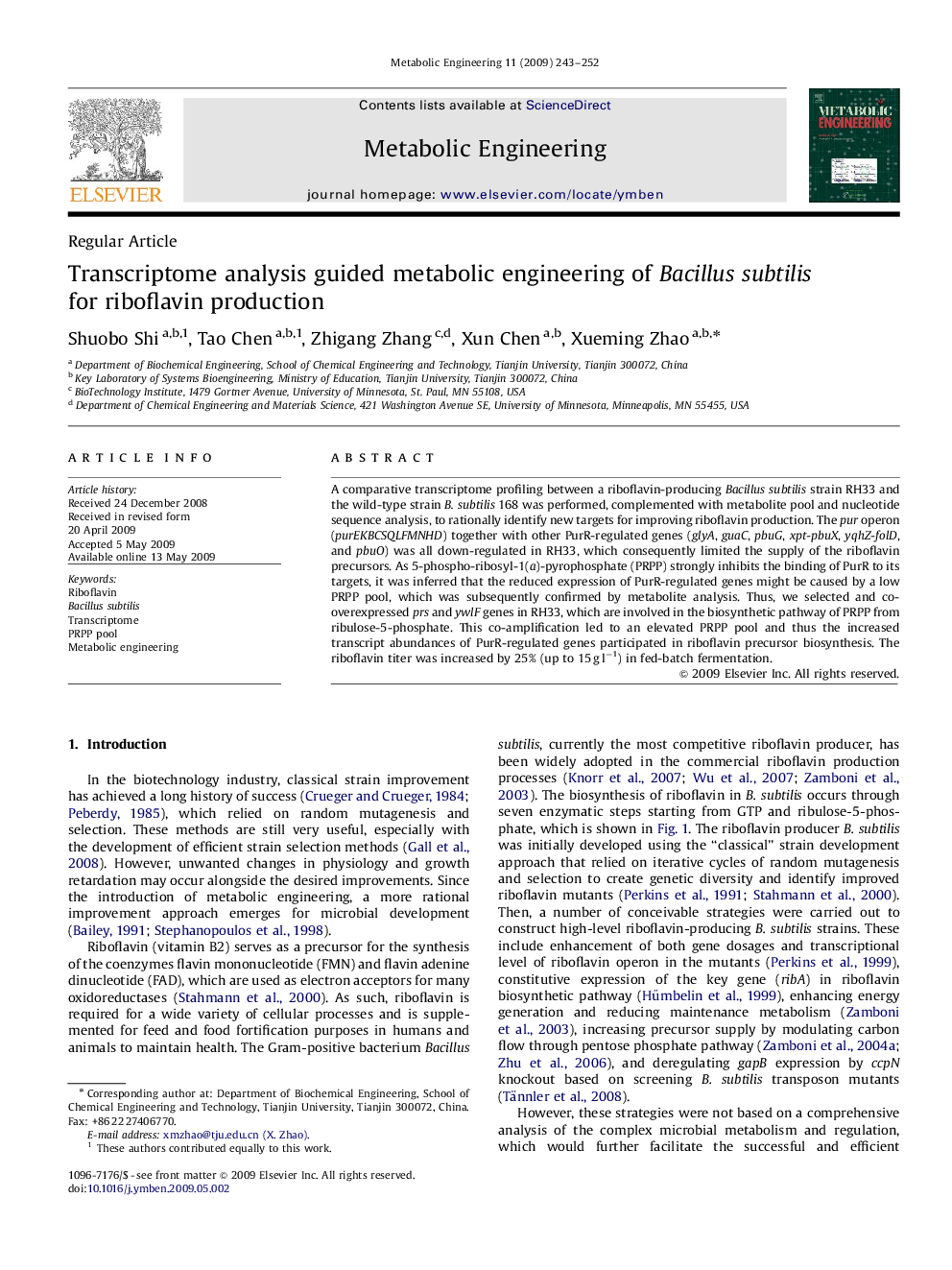| Article ID | Journal | Published Year | Pages | File Type |
|---|---|---|---|---|
| 31784 | Metabolic Engineering | 2009 | 10 Pages |
A comparative transcriptome profiling between a riboflavin-producing Bacillus subtilis strain RH33 and the wild-type strain B. subtilis 168 was performed, complemented with metabolite pool and nucleotide sequence analysis, to rationally identify new targets for improving riboflavin production. The pur operon (purEKBCSQLFMNHD) together with other PurR-regulated genes (glyA, guaC, pbuG, xpt-pbuX, yqhZ-folD, and pbuO) was all down-regulated in RH33, which consequently limited the supply of the riboflavin precursors. As 5-phospho-ribosyl-1(a)-pyrophosphate (PRPP) strongly inhibits the binding of PurR to its targets, it was inferred that the reduced expression of PurR-regulated genes might be caused by a low PRPP pool, which was subsequently confirmed by metabolite analysis. Thus, we selected and co-overexpressed prs and ywlF genes in RH33, which are involved in the biosynthetic pathway of PRPP from ribulose-5-phosphate. This co-amplification led to an elevated PRPP pool and thus the increased transcript abundances of PurR-regulated genes participated in riboflavin precursor biosynthesis. The riboflavin titer was increased by 25% (up to 15 g l−1) in fed-batch fermentation.
